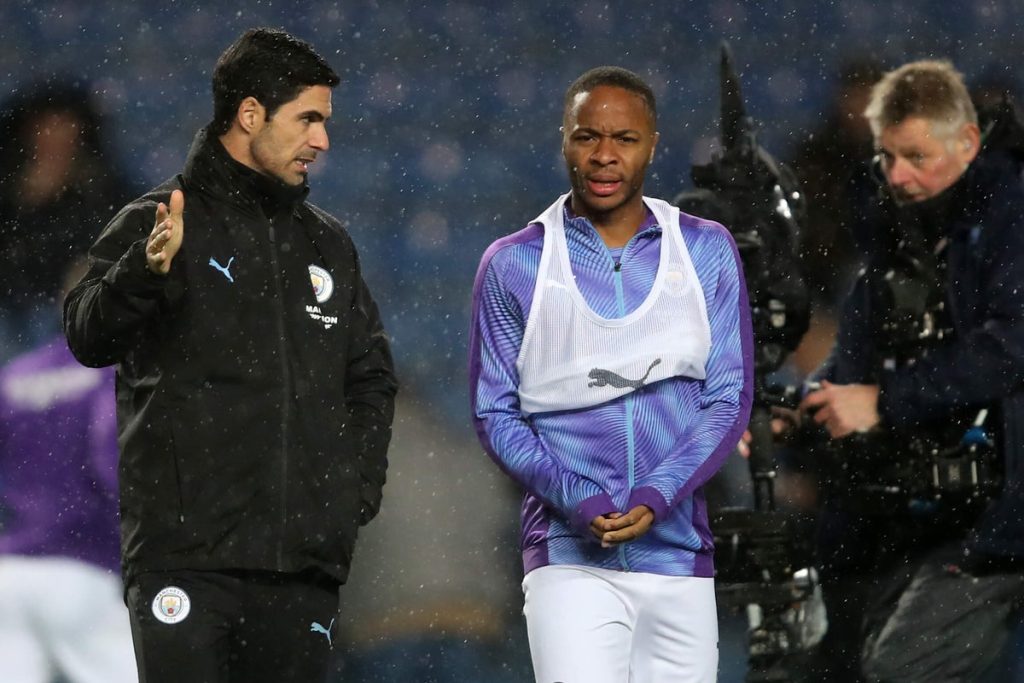Raheem Sterling’s transformation from a speedy winger to one of the most lethal goalscoring wingers in Europe can be traced back to a training drill during the 2017-18 season at Manchester City, under the leadership of Pep Guardiola and Mikel Arteta. Arteta, now Sterling’s manager at Arsenal, played a key role in enhancing Sterling’s efficiency in front of the goal by focusing on goal scoring strategies and analysing game dynamics in a granular manner. The study led to determining the zones where most goals are assisted and scored, and a time-bound shooting drill was introduced, emphasizing quick decision-making in high-pressure scenarios.
Guardiola’s assistant Lorenzo Buenaventura, implemented practical, game-based training methodologies that involved a 60-yard sprint followed by shooting within a marked square under high pressure. Buenaventura’s findings revealed that fast breaks required longer sprints than usually associated with counter-attack training. Arteta used a stopwatch during the drill to keep time for shots and instilled the importance of decisiveness and simplicity in players. These specialised training sessions, coupled with video analysis of renowned wingers, helped Sterling evolve and hone his skills.
Sterling joined Manchester City in 2015 as a dynamic player known for his dribbling prowess. However, under Guardiola’s management, he had to adapt to a new strategy that emphasised a more team-centric approach. The onus was on identifying the free man in possession and taking calculated aggressive moves when in a clear one-on-one situation. Such changes led Sterling to score a healthy statistic of 10 goals and 15 assists in 2016-17, but it was not until Arteta started working closely with him and Leroy Sane that they started clocking elite numbers.
Guardiola’s design ensured that the most potent assist zone was the byline area inside the penalty box, and City’s wingers were primed to occupy that position. In the 2017-18 season, Sterling’s goal and assist tally jumped to 23 goals and 14 assists, and his shot conversion rate almost doubled from 10.9 per cent to 20.7 per cent. The following season saw Sterling score 25 goals and 14 assists, with his highest goal tally of 31 recorded in Arteta’s final season at City.
Sterling’s performance dipped slightly after his transition to Chelsea, which is attributed to the different strategies and aggressive recruitment approach the club used, compromising stability and continuity. After being left out of Chelsea’s squad, Sterling reunited with Arteta at Arsenal. Arteta’s belief in Sterling’s capabilities, coupled with Sterling’s drive to prove his worth, saw him rejoin the training program that took his game to a new level.
Sterling’s arrival at Arsenal was timely, as he had two weeks during the international break to familiarize himself with Arteta’s methods. Despite five years of professional evolution on both sides, they hope their shared maturity could make a difference in the game against City. Sterling, who has proven his mettle against his former club, and Arteta, who has previously managed to tap into Sterling’s potential, are hoping to replicate the success they enjoyed during their City stint.


